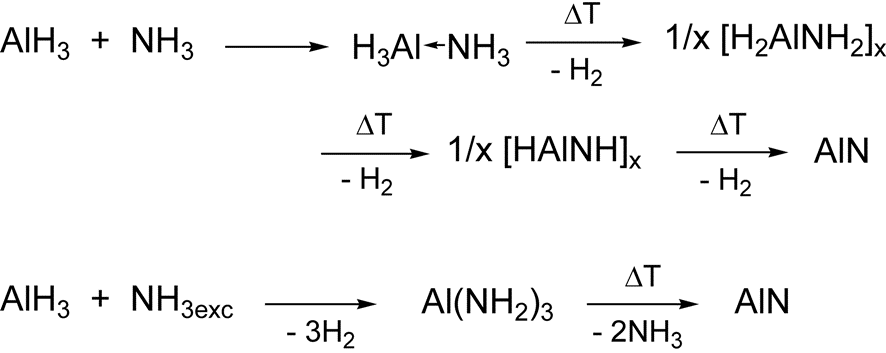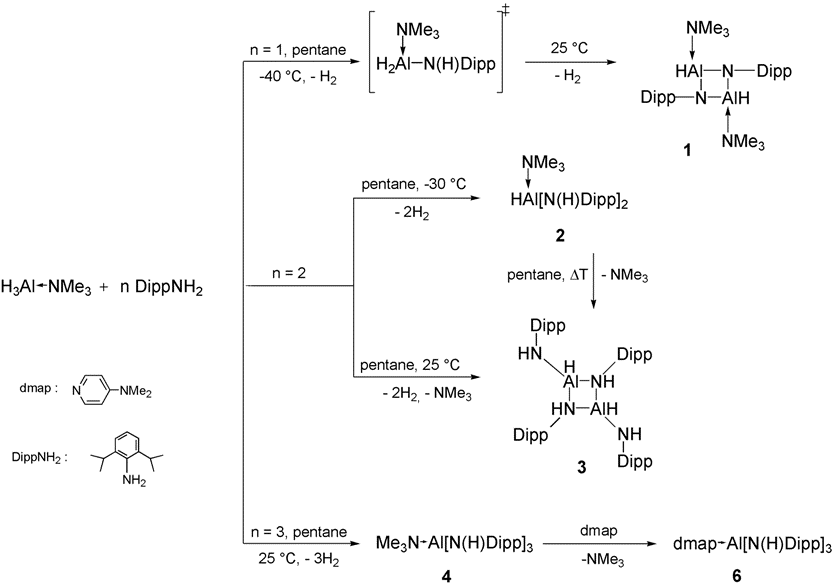Compounds with an AlN Skeleton
Compounds with an AlN Skeleton
The fascinating reaction of AlH3 with NH3, which was first studied by Wiberg, shows the whole spectrum of the Al-N- chemistry. At low temperatures, the Lewis acid-base adduct H3Al─NH3 I is formed, which decomposed step by step by rising temperatures under H2-elimination via formation of an aminoalane [H2AlNH2]x II an iminoalane [HAlNH]x III and finally at higher temperatures to aluminium nitride AlN [1].

Figure 1: Reaction of AlH3 with NH3
Since the solid state structures of these amino- and iminoalanes are still unknown, numerous organometallic derivatives of these complexes have been synthesized in the past. It was found that the degree of oligomerization of the amino- and iminoalanes strongly depends on the size of the substituents used.
We are interested both in the development of suitable single-source precursors for AlN, where especially aminoalanes will be investigated, as well as in studies concerning the synthesis and reactivity of low-aggregated iminoalanes. As a synthetic route, will be examined reactions of low-valent aluminum compounds in addition to the established procedures (H2 and alkane elimination reaction) are investigated.
Aminoalanes
Reactions of H3Al─NMe3 and H3Al─NMe2Et with the primary amine DippNH2 lead depending on the reaction temperature and the molar ratio used either to monomeric and heterocyclic aminoalanes or base-stabilized, dimeric iminoalanes [2].

Figure 2: Synthesis of amino and iminoalanes
References
[1] E. Wiberg, A. May, Z. Naturforsch. B 1955, 10, 229.
[2] T. Bauer, S. Schulz, H. Hupfer, M. Nieger, Organometallics 2002, 21, 2931.
